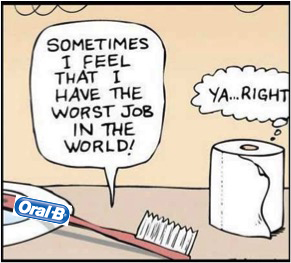Home/Articles
/ Periodontology /
10 Tips on Providing Effective Oral Hygiene Advice – From my talk at the BDIA (Sponsored by Oral-B)
June 22, 2021

Tip 1: Orientate
- Many patients are ignorant of the oral anatomy and have an inadequate spatial sense, so begin by introducing the basic anatomy of the oral tissues.
- The teeth and gingivae can be visualised using a hand mirror and/or intra-oral camera. I usually gently place a probe into the gingival sulcus/pocket to emphasise the area they should be aiming for. Radiographs can also be helpful to orientate the patient and show any calculus, which may not be visible clinically.
Tip 2: Disclose
- It’s helpful to disclose plaque using a plaque disclosing tablet or solution as this provides a clear visual illustration of any areas the patient may be missing. This allows you to provide tailored oral hygiene instruction.
- Make sure you use Vaseline on the lips or they may go purple!
- It may be helpful for the patient to take a photograph on their phone to remind them of the areas they are missing.
- Always calculate a plaque score as this provides you with an objective measurement of plaque control, which is important from a medico-legal perspective.
- If you are short of time, you can still calculate a plaque score without disclosing (visual/use your probe) or you may want to use a partial recording system.
Tip 3: Demonstrate intraorally
- Remind your patients to bring their OH aids with them to their appointments. You may want to include this in the reminder text/email.
- The Oral B Test Drive is also very helpful when demonstrating electric toothbrush technique.
- An opportunity for the patient to demonstrate their current technique intraorally and adapting this is far more effective than using models as the ‘feel’ element is imperative.
- If the patient is struggling with interdental cleaning technique, you may request them to video you on their phone whilst you show them in their mouth.
- Demonstration intraorally also allows you to distinguish if suboptimal oral hygiene is due to poor compliance or if the patient is physically unable to perform the oral hygiene regime. In the latter, it is our responsibility to find ways of helping them.
Tip 4: Start lingual/palatal
- These are commonly missed areas during brushing.
- Advise patients to clean these areas first as energy levels are highest at the start of the oral hygiene regime.
Tip 5: Watch out for the overzealous brushers
- Although these patients may not have periodontitis, if they are brushing too aggressively they may have recession.
- Advise a pen-grip when holding the toothbrush and the brushing motion should be carried out using their wrist rather than their elbow/shoulder.
Tip 7: Promote power brushes and interdental brushes (Chapple 2015)
- Power brushes provide small but statistically significantly greater reductions in plaque and gingivitis than manual brushes.
- Re-chargeable devices are superior to battery operated power brushes.
- Interdental cleaning is essential for gingival health and interdental brushes are the most effective method for plaque removal.
- Flossing cannot be recommended other than for sites of gingival and periodontal health, where interdental brushes will not pass through the interproximal area without trauma.
Tip 7: Use the GPS approach (Tonetti 2015)
- Behavioural change can be facilitated by the evidence-based GPS approach. This involves:
- Goal setting – identifying with the patient the change to be made e.g. we would like your plaque score to reduce from 80% to 40% by next visit.
- Planning – working with the patient to decide when, where and how they will undertake the behaviour change e.g. we will do this by focusing on your brushing technique.
- Self-monitoring – encouraging the patient to assess their own behaviour in relation to the goals e.g. we will be giving you some plaque disclosing tablets to use after your brushing to assess how well you are doing.
Tip 8: Keep it simple
- To maximise the chances of the patient remembering your advice and complying, keep it simple.
Tip 9: Regularly reinforce
- As humans, we do forget so regularly reinforce instructions every visit.
- Praise the patient for what they are doing well and suggest how they may further improve their plaque control.
Tip 10: Emphasise patient responsibility
- The importance of this should not be underestimated.
- I usually tell my patients it is 70% about what they do at home and 30% about what I do when aiming to achieve a successful periodontal outcome.
These notes are taken from a presentation I delivered at the BDIA, which was kindly sponsored by Oral B.
Learn more by reading some of our other articles here.



